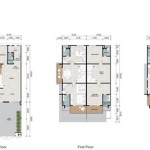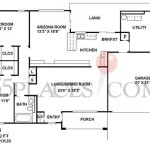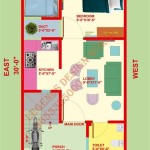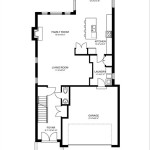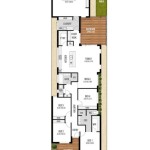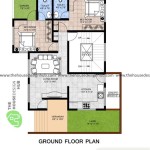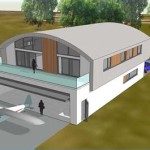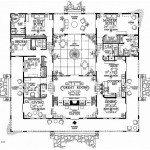Beach Home Plans On Piers: Design Considerations and Benefits
Beach homes on piers, also known as pile dwellings or stilt houses, represent a unique architectural response to the challenges and opportunities presented by coastal environments. These structures are elevated above the ground or water level using a system of vertical supports, typically made from wood, concrete, or steel. This design choice provides numerous advantages, including protection from flooding, erosion, and storm surges, while also offering aesthetic appeal and enhanced views.
The construction of a beach home on piers requires careful planning and consideration of various factors, including site conditions, local building codes, environmental regulations, and structural integrity. Architects and engineers must collaborate closely to ensure that the design is both functional and sustainable, minimizing the impact on the surrounding ecosystem while providing a safe and comfortable living space. The ultimate goal is to create a residence that harmonizes with its natural setting, offering a tranquil retreat from the demands of modern life.
Advantages of Elevated Construction
Elevated construction offers several distinct advantages for beach homes. The primary benefit is protection from coastal hazards. By raising the living space above the anticipated flood level, the risk of water damage to the structure and its contents is significantly reduced. This can result in lower insurance premiums and decreased repair costs over the lifespan of the home. Furthermore, elevated construction helps to minimize the impact of erosion. The pilings act as a barrier, preventing the removal of sand and soil from beneath the foundation.
Another advantage is improved ventilation. The space beneath the house allows for natural airflow, which can help to keep the interior cooler and reduce humidity. This is particularly beneficial in hot and humid climates where air conditioning costs can be substantial. Additionally, elevated construction provides enhanced views of the surrounding landscape. By raising the living space, homeowners can enjoy unobstructed vistas of the ocean, beach, and coastline.
Environmental considerations also play a crucial role in the decision to build on piers. Elevated construction minimizes the disturbance to the natural environment. The pilings have a smaller footprint than a traditional slab foundation, allowing for greater preservation of vegetation and wildlife habitats. Moreover, the space beneath the house can serve as a refuge for small animals during high tides or storms. This type of construction promotes sustainable building practices and helps to protect the delicate coastal ecosystem.
Design Considerations for Beach Homes on Piers
Designing a beach home on piers involves a complex interplay of structural, aesthetic, and functional considerations. One of the most important factors is the selection of appropriate materials. Materials that are resistant to saltwater corrosion, insect infestation, and weathering are essential for ensuring the longevity of the structure. Pressure-treated lumber, marine-grade stainless steel, and composite decking are commonly used in coastal construction.
The design must also take into account the wind loads and wave action that the home will be subjected to. Coastal areas are often exposed to strong winds and severe storms, which can exert significant forces on the structure. The pilings must be properly sized and spaced to withstand these forces, and the framing must be adequately braced to prevent racking and twisting. In areas prone to hurricanes, additional reinforcement may be required to meet stringent building codes.
The layout of the home should also be carefully considered. Open floor plans that maximize natural light and ventilation are popular choices for beach homes. Large windows and sliding glass doors can provide stunning views and create a seamless connection between the interior and exterior spaces. Decks and balconies are essential features, providing outdoor living areas for relaxation and entertainment. The design should also incorporate features that enhance accessibility, such as ramps or elevators, especially for homeowners with mobility issues.
The aesthetic appeal of the home is also an important consideration. Beach homes on piers often feature a coastal or contemporary design style, with clean lines, light colors, and natural materials. The exterior cladding can be chosen to complement the surrounding environment, blending in with the sand dunes and vegetation. The roofing should be durable and weather-resistant, and the landscaping should be designed to minimize water usage and maintenance.
Furthermore, when designing beach homes on piers, it is crucial to adhere to all local building codes and regulations. These codes are in place to ensure the safety and structural integrity of the building, as well as to protect the environment. Obtaining the necessary permits and approvals can be a time-consuming process, but it is essential to avoid potential legal issues and ensure compliance with all applicable laws.
Foundation and Structural Aspects
The foundation is the most critical element of a beach home on piers, as it provides the primary support for the entire structure. The pilings must be driven deep into the ground to provide adequate bearing capacity. The depth and spacing of the pilings will depend on the soil conditions, the size and weight of the house, and the anticipated wind and wave loads. A geotechnical engineer should be consulted to perform a soil analysis and determine the appropriate foundation design.
The connection between the pilings and the house is also crucial. The pilings are typically connected to a system of beams and girders, which distribute the load evenly across the foundation. The framing of the house is then attached to the beams and girders. The connections must be strong and durable to withstand the forces exerted by wind and waves. Special attention should be paid to the detailing of these connections to prevent corrosion and failure.
The structural design of a beach home on piers must also account for the potential for settlement. Over time, the pilings may settle slightly due to the weight of the house or changes in the soil conditions. The framing must be designed to accommodate this settlement without causing damage to the structure. Flexible connections and adjustable supports can be used to allow for differential movement between the foundation and the house.
In addition to the pilings, other foundation options may be considered, such as concrete piers or helical piles. Concrete piers are typically used in areas with stable soil conditions, while helical piles are suitable for areas with soft or unstable soils. The choice of foundation system will depend on the specific site conditions and the recommendations of the geotechnical engineer.
The structural aspects of beach home construction on piers are governed by strict building codes and engineering standards. These codes specify the minimum requirements for the design and construction of foundations, framing, and connections. Compliance with these codes is essential to ensure the safety and durability of the home. Regular inspections should be performed during the construction process to verify that the work is being done in accordance with the approved plans and specifications.
Furthermore, the area beneath elevated beach homes requires special attention regarding drainage and landscaping. Improper drainage can lead to water accumulation and erosion, undermining the structural integrity of the pilings. Landscaping should be carefully planned to avoid directing water towards the foundation and to minimize the risk of damage from wave action.
Finally, regular maintenance and inspections are critical to preserving the structural integrity of beach homes on piers. The exposed pilings and structural elements should be inspected periodically for signs of corrosion, decay, or damage. Repairs should be made promptly to prevent further deterioration. A proactive approach to maintenance will help to ensure the long-term performance and value of the home.

Elevated Piling And Stilt House Plans Coastal From Home

Elevated Stilt Raised House Plans For Builders

Casual Informal And Relaxed Define Coastal House Plans

Elevated Piling And Stilt House Plans Coastal From Home

Plan 017h 0035 The House

Beach House Plans Archives From Home Designs

Shelter Cottage Piling Foundation With Elevator 2466 Sf Southern Cottages

Family S 576 Sq Ft Stilt Beach House

Elevated Piling And Stilt House Plans Coastal From Home

Beach House Plans Archives From Home Designs

